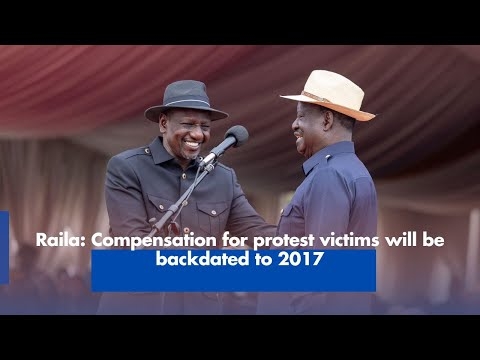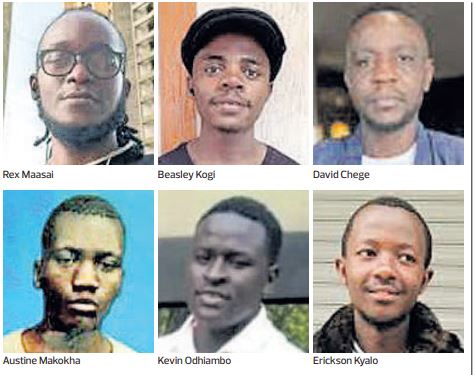

President Ruto has announced a national framework for compensating victims of protests and public demonstrations. This is to provide “accountability, redress, and reparations” for civilians and security personnel who suffered bodily harm or lost their lives during violent protests since 2017.
This process aims to balance constitutional freedoms, civic responsibilities, and public safety concerns, while acknowledging the democratic space expanded since the enactment of the 2010 Constitution.
The idea of a compensatory framework is commendable, specifically in healing the wounds of past human rights violations linked to demonstrations, rebuilding national reconciliation, offering an accountability mechanism and institutionalising reparative justice.
This initiative came amid heightened tension after recent deadly protests and repeated demands by the opposition group and civil society and international pressure, including from the US Senate. However, the framework does have significant shortcomings that warrant critical examination.
Overreach of executive power?
The constitution provides for the separation of powers among the Executive (headed by the President), the Legislature and the Judiciary.
This arrangement is intended to prevent any single branch from becoming too powerful, ensuring checks and balances. Creating a framework that may have quasi-legislative or quasi-judicial characteristics without parliamentary approval, risks blurring the separation of powers between the Legislature and Executive.
Article 94 of the Constitution makes Parliament the body responsible for considering and passing laws, which helps to ensure transparency, accountability and democratic participation in the national agenda.
This would include law about public compensation mechanisms. The compensatory framework system was established directly through a presidential proclamation without input from the Parliament or statutory law backing.
Root causes?
The persistent cycle of protests in many African countries is often fuelled by absence of a comprehensive mechanism to address the deep-rooted causes of these societal upheavals. Emotive and structural drivers of violent protests in Kenya have often included political exclusion, economic grievances, and poor governance issues.
By focusing on retrospective monetary compensation, the state risks failing to confront and resolve the deep-seated grievances that ignite public dissent. Otherwise, dissent will continue and possibly repeats of violence.
Accountability?
State payment of compensation does not amount to accountability of the individuals responsible. Indeed, it is not impossible that the compensation will be made specifically with non-acceptance of legal responsibility, at least by the state generally and police command. So far, any statement that “we were wrong” has been notably missing. Will individual officers be prosecuted? And who will be considered responsible for the injuries to security officers?
Without a clear framework for accountability, training security forces on their mandates, reforming law enforcement tactics, prosecuting the perpetrators of human rights violations, the risk of a continuous cycle of protests and violent reaction remains high.
Human rights bodies have criticised the framework for being too narrow, mainly focusing on monetary compensation aspects rather than broader reparative justice measures like official acknowledgement of wrongdoing, memorialisation, institutional reforms and assurances of non-recurrence in the future.
Timeline
The 120-day time frame allocated for the implementation of the compensatory framework is insufficient, given the scope and complexity of the tasks involved.
The task of identifying victims and beneficiaries of compensation for protest-related human rights violations requires comprehensive case profiling, broad-based public participation and extensive consultation to ensure accuracy and fairness in assessing their claims. Such detailed documentation and verification processes are inherently time-consuming and demand careful attention.
In addition, meaningful reparations should involve various stakeholders, including the victims' families, civil society, and other relevant human rights bodies such as the Kenya National Commission on Human Rights (KNCHR). These engagements are critical to ensure the process is inclusive, transparent and responsive to the needs and expectations of affected individuals.
Hurried timelines can compromise these consultations, potentially marginalising voices and undermining the legitimacy of the framework. A truncated timeframe may result in superficial or incomplete remedies that fail to foster long-term healing and reconciliation.
Necessary decisions
Kenyan courts have historically awarded substantial compensatory damages to victims of human rights abuses, which are sometimes higher than administrative schemes would provide.
An example is the Nyayo House torture cases in which significant awards through litigation were made based on both common law and constitutional principles.
For example, in 2013 Gitobu Imanyara and two others were awarded damages: one was awarded Sh7 million, one Sh10 million, and the third Sh15 million. These awards were, of course, for extended periods of detention and torture.
The President’s announced process is inevitably complex. Somehow, the following questions will have to be answered. They reflect the decision-making process that would be involved if a case went to court.
First who can claim? Victims of police violence, of unlawful detention? Suppose a person was shot or otherwise injured while doing something illegal such as setting fire to a police station or looting?
It is hard to imagine the state compensating anyone guilty of “terrorism”. Reports say a considerable number have been charged. With court approval, they may be detained for nearly a year for “investigation”. They may not be found guilty ¾ but this would be way after the 120 days deadline.
Who has to prove what? Is it assumed that all police use of bullets was unlawful, or do the specific circumstances have to be explored, and who has the task of proving what happened and that it was unlawful? If the injury resulted from tear-gassing, is the situation different? Is it assumed that everyone shot was shot by the police? Some bullets found in victims’ bodies have disappeared.
Presumably the compensation will be less than one might receive through a court case (this may be one motive for the “framework”). In a court case, one might get compensation for financial loss—medical expenses, loss of earnings, etc. Then there would be compensation for pain and suffering—which is probably different for each person.
Would the idea be to give one sort of compensation only, or a fixed amount—the same for everyone, or within a limited range? If it is to be personalised it could take a long time. Yet to give people in radically different situations the same compensation is actually treating people unequally and a violation of Article 27.
How about those who were abducted but released. Or even more complex, those who were abducted and have not reappeared. Does someone have to prove that the abductors were state employees? If they disappeared a certain time ago, are they presumed dead? Who gets the money and how much should be awarded?
What is the mechanism for deciding individual cases? Will a special body be set up? Who will form it? Could claimants bring a lawyer?
Without a framework set out in law (hard to achieve in 120 days, with the necessary public participation), then only a free and informed agreement to accept this compensation and not go to court would be legally binding.
A special body deciding who gets what would not be a court and would not be the alternative “another independent and impartial tribunal or body” (Article 50(1)). So, people could not be compelled to forego their constitutional rights to go to court before they know what they are going to get out of it
The money
There is notable lack of clarity about the source, amount, and sustainability of funds allocated to this project. This generates concerns about whether the framework is financially viable and adequately backed by government resources.
Some political leaders and civil society actors have highlighted that no formal budget line has been designed or parliamentary approval sought, which raises scepticism about the framework’s transparency and accountability.
Without independent financial oversight from bodies like Parliament or KNCHR, the framework’s implementation under the Executive Office of the President presents a risk of politicisation or mismanagement of funds. The Auditor General’s reports come only after the event.
The
writer is a Teaching Fellow at Daystar School of Law











